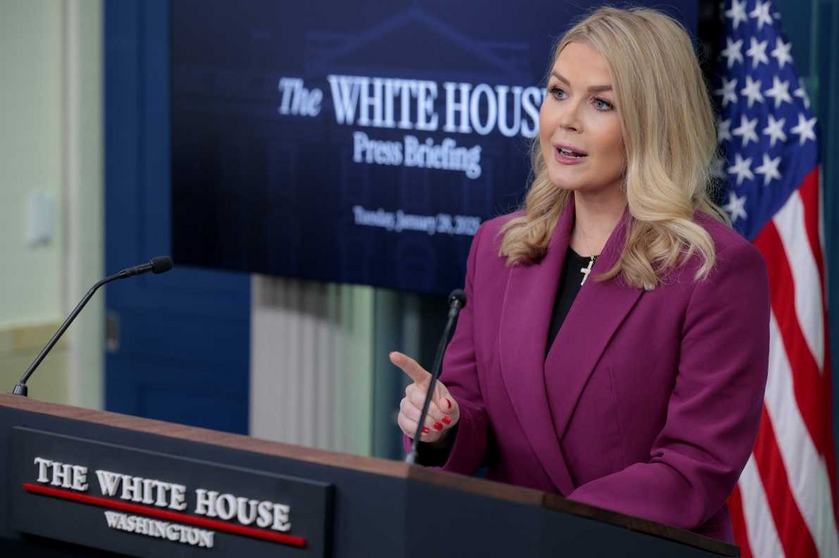Since President Trump’s return to office, the media has been working overtime to stoke fear and hysteria over his administration’s common-sense policies. The latest target? The temporary pause on federal financial assistance programs, as outlined in the January 27, 2025, Office of Management and Budget (OMB) memorandum. Left-wing outlets and partisan activists have rushed to misrepresent this pause as an attack on the most vulnerable Americans. In reality, this is nothing more than a responsible and necessary step to get government spending under control and ensure taxpayer dollars are not wasted on radical, left-wing policies that have plagued federal agencies for years.

What the OMB Memo Actually Says
The OMB directive instructs federal agencies to temporarily pause financial assistance programs while reviewing them for alignment with President Trump’s policy priorities. The key phrase here is "review"—not "eliminate" or "defund." The memo specifically excludes programs that provide direct assistance to individuals, such as:
- Social Security
- Medicare
- Medicaid
- Food stamps (SNAP)
- Welfare benefits
- Other individual assistance programs
Furthermore, the memo explicitly states:
"Nothing in this memo should be construed to impact Medicare or Social Security benefits."
Yet, despite these clear exclusions, the media continues to push the false narrative that Trump's administration is trying to rip aid away from struggling Americans.

Media Misinformation and Manufactured Panic
During the January 29 White House press briefing, multiple reporters demonstrated exactly how the media distorts reality to serve a political agenda. Despite clear explanations from Press Secretary Karoline Leavitt, reporters repeatedly asked the same misleading question about the funding pause, attempting to create an illusion of uncertainty.
Reporters Repeating the Same False Narrative
Zeke Miller (Associated Press):
- "It’s caused a lot of confusion around the country among Head Start providers, services to homeless veterans, and Medicaid providers. Could you help clear up some confusion?"
- Leavitt’s Response: "There’s no confusion in this building. This is not a blanket pause. Individual assistance programs, like Medicare, Social Security, and welfare benefits, are not affected."
Nancy Cordes (CBS News):
- "How long is this pause going to last? And how should organizations relying on federal funding make payroll in the meantime?"
- Leavitt’s Response: "It’s temporary. Agencies can request reviews, and exceptions will be granted on a case-by-case basis."
Peter Alexander (NBC News):
- "Will nothing that the president is doing here, in terms of the freeze in these programs, raise prices for ordinary Americans?"
- Leavitt’s Response: "This is about stopping reckless government spending, not taking away benefits. The real cause of price increases was Biden’s inflation crisis."
Jacqui Heinrich (Fox News):
- "Does this impact organizations like Meals on Wheels?"
- Leavitt’s Response: "I have now been asked and answered this question four times. Individual assistance programs are not impacted."

Exposing the Media's Agenda
Instead of reporting the facts, these reporters repeated the same misleading question over and over in an attempt to frame Trump’s fiscal responsibility as an attack on vulnerable communities. Even after Leavitt made it crystal clear that direct assistance programs are unaffected, they refused to accept reality and continued fearmongering.
Why This Pause is Necessary
President Trump was elected to stop government waste and restore fiscal sanity. Under Biden, taxpayer money was funneled into:
- Radical DEI (Diversity, Equity, and Inclusion) programs
- Climate change social engineering (Green New Deal-style projects)
- Foreign aid to nations that refuse to cooperate with U.S. immigration policies
- NGOs facilitating illegal immigration
This pause is a responsible and temporary measure to ensure that taxpayer dollars go toward America First policies rather than being squandered on leftist pet projects.
The Reality: Trump is Restoring Fiscal Responsibility
The truth is simple:
- No one is losing Social Security, Medicare, or food assistance.
- The pause is temporary and allows for program review—not permanent cuts.
- Trump is ensuring taxpayer money isn’t wasted on radical leftist policies.
The real scandal here isn't Trump's funding pause—it's the media’s deliberate effort to mislead the public by manufacturing panic where none is warranted. Instead of acknowledging the administration’s reasonable approach to fiscal responsibility, they would rather stoke fear and push their preferred narrative.
President Trump is keeping his promise to drain the swamp and hold the federal bureaucracy accountable—and that's exactly why the media is panicking.













